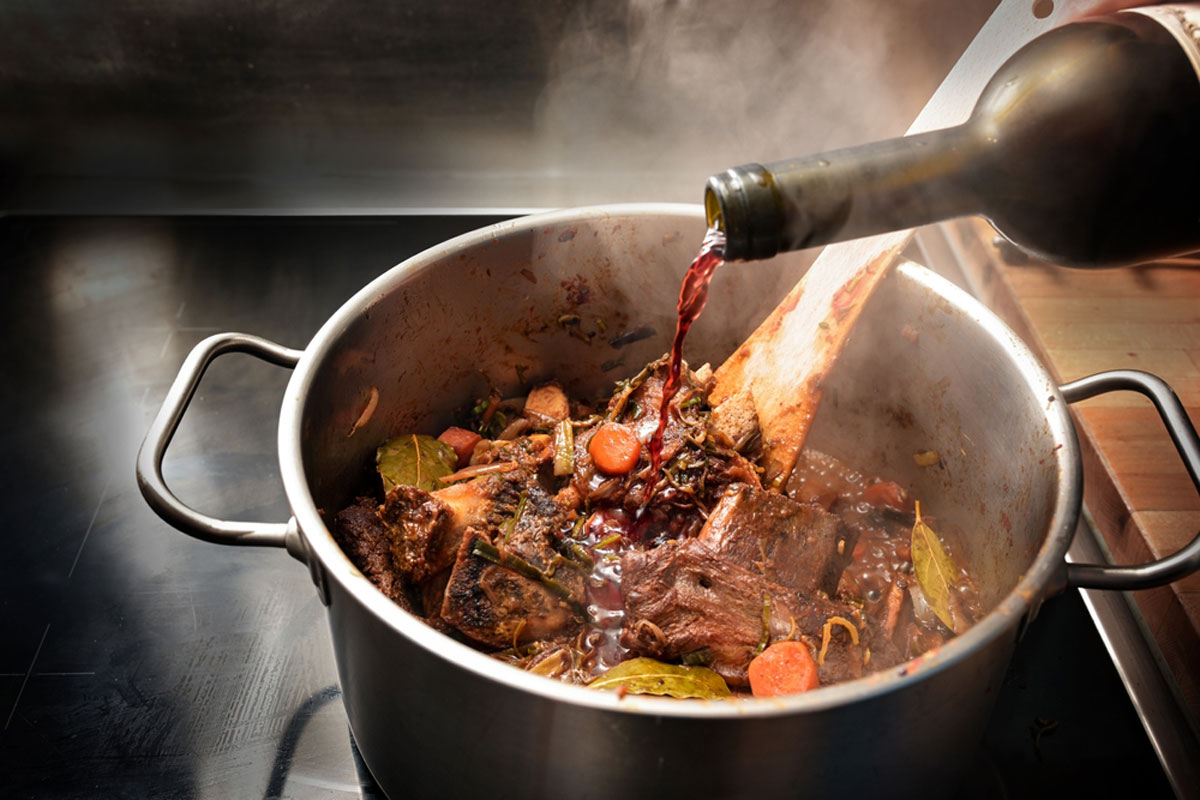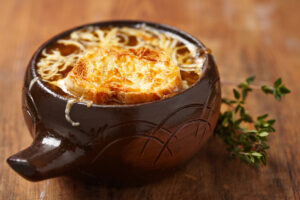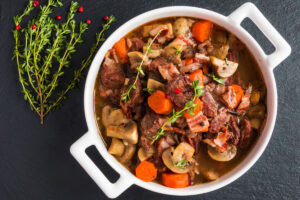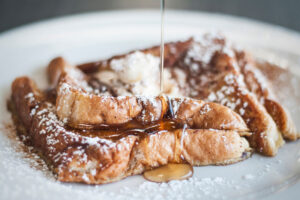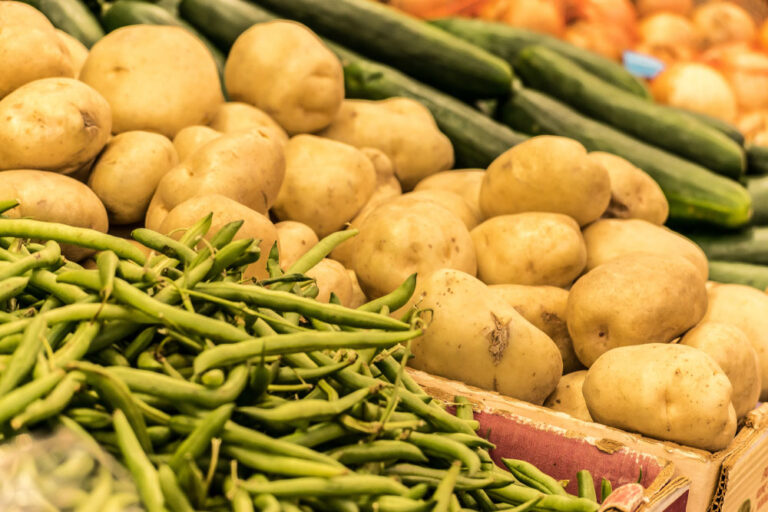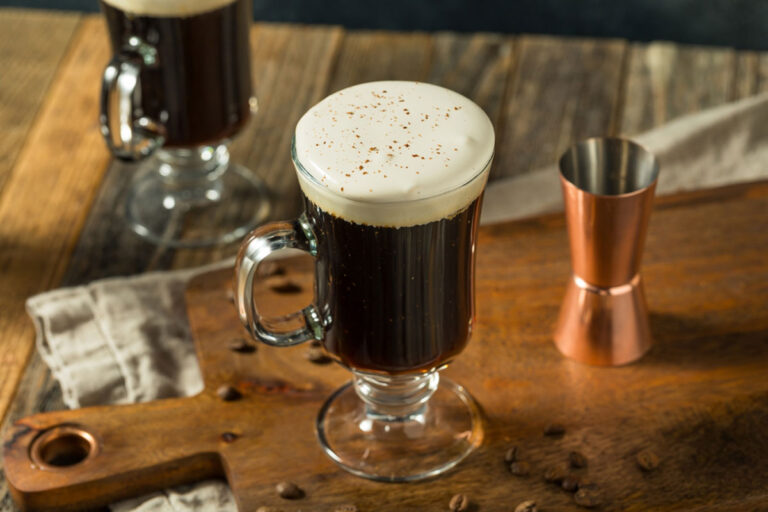The Arrival of the Huguenots and Their Culinary Legacy
Irish cuisine is often associated with wholesome, earthy dishes rooted in the land and sea. However, the influence of French culinary traditions has been quietly shaping Irish cooking for centuries. One of the most significant contributors to this was the arrival of the Huguenots—French Protestants who fled religious persecution in the late 17th century. Though their impact on areas such as industry, banking, and textiles is well-documented, their role in transforming Irish food is less widely known but equally important.
In 1685, King Louis XIV revoked the Edict of Nantes, stripping French Protestants of their rights and prompting a mass exodus. Many Huguenots found refuge in Ireland, particularly in Dublin, Cork, Waterford, and Portarlington. They brought with them sophisticated culinary techniques, refined flavors, and an appreciation for food that would gradually permeate Irish kitchens.
One of their lasting legacies was in the world of baking and pastry. The Huguenots introduced French bread-making techniques, including the use of yeast-leavened doughs, leading to lighter, more textured breads than the traditional Irish soda bread. Some historians even credit them with influencing the development of the beloved Irish blaa, a soft, floury roll still popular in Waterford today.
Additionally, the Huguenots brought a deep knowledge of herbs and sauces, which began to subtly enhance Irish cooking. While Irish cuisine traditionally relied on simple ingredients seasoned with salt and butter, the French influence introduced new elements such as tarragon, thyme, and bay leaves, as well as techniques for creating rich, velvety sauces. This shift in approach laid the foundation for a more refined style of Irish cooking that would evolve over the centuries.
The Rise of French Culinary Training in Ireland
Following the arrival of the Huguenots, the French influence on Irish cuisine continued to grow, particularly in the world of professional cooking. By the 18th and 19th centuries, French culinary training had become the gold standard across Europe, and Ireland was no exception. Wealthy Irish households and estates sought out French-trained chefs, bringing a more refined approach to their kitchens.
One of the earliest signs of this influence was the presence of French chefs working for the Anglo-Irish aristocracy. Many of Ireland’s grand country houses, such as those in Kilkenny, Cork, and Galway, employed French-trained cooks who introduced classical techniques such as roux-based sauces, rich stocks, and delicate pastries. These chefs adapted their skills to local Irish ingredients, blending the two traditions in a way that would quietly shape Irish cuisine for generations.
By the late 19th and early 20th centuries, aspiring Irish chefs often sought training in France or in French-run kitchens across Britain and Ireland. This was particularly evident in the hotel and restaurant industry, where the influence of haute cuisine—characterized by precise preparation and elegant presentation—became increasingly apparent.
One striking example of this is the development of fine dining in Ireland. French-style restaurants began to emerge in Dublin and other major cities, often run by Irish chefs who had trained under French masters. These establishments introduced dishes like coq au vin and boeuf bourguignon to Irish diners, while also refining local specialties. This cross-pollination of techniques led to a more nuanced approach to Irish cooking, where slow braising, reduction sauces, and elegant plating became more common.
At the same time, French influences trickled into everyday Irish cooking. Home cooks, inspired by the popularity of French cuisine, began to incorporate elements such as wine-based sauces, garlic, and shallots into their meals—ingredients that had not traditionally been staples of the Irish kitchen.
The French Influence on Irish Dairy and Cheese
Ireland has long been renowned for its dairy products, with its lush pastures providing some of the finest milk, butter, and cheese in the world. But while Irish dairy has deep indigenous roots, French influence played a key role in refining and expanding its traditions, particularly in cheese-making.
The Huguenots, with their advanced knowledge of agriculture and food production, were among the first to introduce new cheese-making techniques to Ireland in the late 17th century. They brought expertise in aging and maturing cheeses, methods that were relatively undeveloped in Ireland at the time. While traditional Irish dairy products, such as fresh curds and soft cheeses, had existed for centuries, the French influence helped refine and diversify them, leading to the creation of more complex and aged varieties.
One of the most significant impacts was on Irish farmhouse cheese, a tradition that saw a major revival in the 20th century but had its early roots in the techniques brought by the French. The use of rennet-based hard cheeses, careful temperature control, and affinage (the aging process) became more common, allowing Irish cheese-makers to produce more sophisticated varieties. Today, award-winning Irish cheeses such as Milleens, Cashel Blue, and Durrus owe a debt to these early French methods.
Butter-making also saw subtle changes due to French influence. While Irish butter was already famous, the introduction of more refined churning techniques and an increased appreciation for cultured butter—something highly prized in French cuisine—helped shape the development of modern Irish dairy products. The popularity of cultured butter, which has a deeper, tangier flavor due to fermentation, reflects this influence and is now a defining characteristic of high-quality Irish butter.
Perhaps most interesting is the influence of French cooking on how dairy is used in Irish cuisine. The French skill in making béchamel (a white sauce made with butter, flour, and milk) found a natural home in Irish cooking, where similar techniques were adapted for dishes like seafood chowder, creamy potato gratins, and even modern variations of colcannon.
This fusion of French technique with Irish dairy excellence created a lasting legacy that continues today, as Irish cheese-makers and dairy producers gain international acclaim. In the next part, we’ll explore how French wine culture left its mark on Irish food and drink traditions, particularly in pairing and cooking with wine.
The Influence of French Wine Culture on Irish Food and Drink
While Ireland is traditionally associated with whiskey, stout, and poitín, French wine culture has played a surprising role in shaping Irish food and drink traditions. This influence can be traced back to the “Wine Geese”—Irish families who fled to France in the 17th and 18th centuries and became deeply involved in the wine trade. Their legacy not only strengthened Ireland’s connection to French wine but also subtly influenced Irish culinary practices.
The Wine Geese and Ireland’s Deep Connection to French Wine
The term “Wine Geese” refers to Irish expatriates who established or contributed to renowned French vineyards, particularly in Bordeaux. Families like the Lynches, Bartons, and Dillons became key figures in winemaking, producing some of the world’s most famous wines, including Château Lynch-Bages and Château Léoville-Barton. Their continued trade with Ireland ensured a steady flow of high-quality French wine into the country, making it a staple among the Anglo-Irish elite and, later, more widely accessible.
This connection helped cultivate an appreciation for wine in Ireland, particularly for pairing it with food. Unlike traditional Irish beverages, which were often consumed separately from meals, wine encouraged a more European dining approach where flavors complemented one another. Over time, this influence trickled down from aristocratic dining rooms to middle-class households and restaurants, inspiring new ways of cooking and serving food.
Cooking with Wine: A French Tradition in Irish Kitchens
French cuisine’s reliance on wine as a cooking ingredient also made its way into Irish cooking. While traditional Irish stews and roasts were historically prepared with water or beer, the French practice of using wine to enhance flavors gained traction, particularly in fine dining. Dishes such as:
- Irish Beef and Guinness Stew with Red Wine – A fusion of Irish and French techniques, where wine is used to deepen the flavor profile of slow-cooked meats.
- Coq au Vin with Irish Free-Range Chicken – A French classic adapted with locally sourced Irish ingredients.
- Mussels in White Wine Sauce – A dish that highlights both Ireland’s seafood traditions and French culinary techniques, incorporating wine, garlic, and cream.
The growing interest in wine also influenced Irish cheese pairings. As Ireland’s artisan cheese industry developed (itself shaped by French methods, discussed earlier), more Irish cheeses were paired with wines—mirroring the French tradition of cheese and wine as a natural combination.
French Influence on Irish Restaurants and Wine Lists
By the 20th century, the French appreciation for wine as an essential part of the dining experience had been firmly embraced by Irish restaurants. The emergence of fine dining establishments in Dublin, Cork, and Galway saw wine lists curated with an emphasis on French vintages, reflecting both historical ties and the continued prestige of French winemaking. Today, even casual Irish restaurants frequently offer carefully selected wines to complement their dishes, a practice deeply rooted in French gastronomy.
French wine culture not only refined the Irish approach to dining but also broadened the culinary landscape by introducing new flavors, cooking methods, and pairings.
The Lasting Legacy of French Influence on Modern Irish Cuisine
Over the centuries, French culinary traditions have quietly shaped Irish food in ways that extend far beyond the historical contributions of the Huguenots, the Wine Geese, and French-trained chefs. Today, their influence is more visible than ever in Ireland’s evolving food scene, from Michelin-starred restaurants to contemporary home cooking.
Michelin Stars and the French Touch in Irish Fine Dining
France’s impact on Irish gastronomy is perhaps most evident in the country’s fine dining scene. Many of Ireland’s top chefs have trained in France or under French culinary masters, bringing back techniques that have elevated Irish cuisine. The emphasis on precision, high-quality ingredients, and artistic presentation—all hallmarks of French cuisine—can be seen in Ireland’s growing number of Michelin-starred restaurants.
Notable Irish chefs like Ross Lewis (Chapter One, Dublin), Danni Barry (formerly of Eipic, Belfast), and JP McMahon (Aniar, Galway) have blended classical French methods with Ireland’s rich local produce, creating dishes that showcase both traditions. The use of reductions, emulsions, and delicate pastry work—techniques rooted in French haute cuisine—can now be found in some of the finest Irish restaurants.
The French Influence on Home Cooking and Everyday Meals
French culinary traditions have not only shaped fine dining but also trickled down into Irish home kitchens. Ingredients and techniques that were once considered foreign are now commonplace:
- Béchamel sauce – A staple in French cooking, is now a core component in dishes like lasagna, fish pies, and gratins.
- Wine-based cooking – Once reserved for upscale dining, it is now widely used in home kitchens for braised meats, stews, and sauces.
- Refined pastry techniques – Have influenced the way Irish bakers approach desserts, from delicate tart crusts to elaborate choux pastries.
French cuisine has also contributed to a broader shift in Irish food culture—one that values seasonality, high-quality ingredients, and an appreciation for balance and technique. This mirrors the French terroir philosophy, which emphasizes the importance of local soil, climate, and traditional methods in shaping food flavors.
The Fusion of Irish and French Traditions Today
The blending of Irish and French culinary traditions has given rise to a uniquely Irish-French fusion cuisine. Dishes like:
- Black pudding with pommes purée and red wine reduction – Combining a classic Irish ingredient with French presentation.
- Dublin Bay prawns with beurre blanc sauce – Merging Ireland’s seafood heritage with a quintessential French sauce.
- Irish farmhouse cheese boards with French-style accompaniments – Reflecting a long history of French influence on Irish dairy.
The emphasis on high-quality, artisanal food production in Ireland today—whether in cheese-making, baking, or butchery—owes much to the meticulous techniques introduced by French cooks centuries ago.
Conclusion: A Lasting and Evolving Influence
French cuisine has left an indelible mark on Irish food, from historical contributions by the Huguenots and Wine Geese to modern fine dining and home cooking. Yet, rather than overshadowing Irish culinary identity, these influences have enhanced it, helping to create a cuisine that is both deeply rooted in Irish traditions and open to refinement and innovation.
Today, as Ireland continues to gain international recognition for its food culture, the French connection remains a vital part of that story—a hidden influence that has shaped the way Irish people cook, eat, and appreciate their food.
FRENCH ONION SOUP WITH IRISH STOUT AND DUBLINER CHEESE
Description: A rich and hearty take on the classic French...
Read MoreIRISH BEEF BOURGUIGNON
Description: Irish Beef Bourguignon gives a Irish twist to the...
Read MoreIRISH SODA BREAD FRENCH TOAST
Description: Transform traditional Irish soda bread into a delectable breakfast...
Read More



